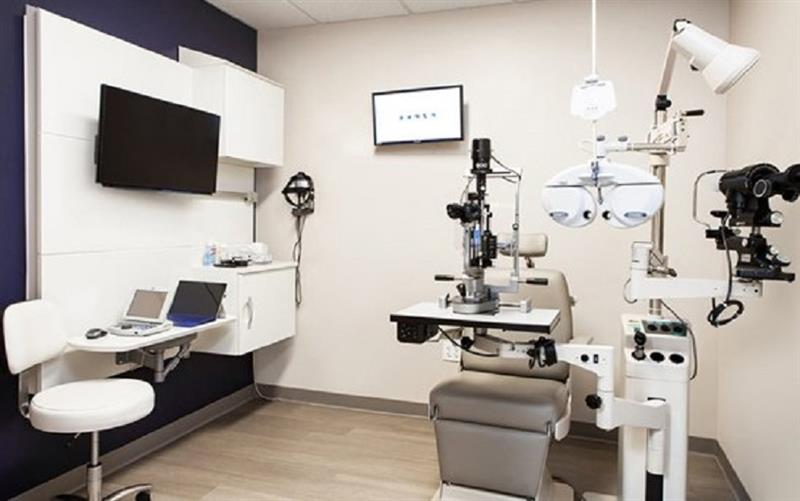
Purchasing cutting-edge optical software helps to build a more productive, patient-focused, and profitable practice in addition to staying current with technology advancements. The advantages are obvious, ranging from improving inventory control and providing analytical analytics to simplifying patient administration and expediting invoicing. Your practice can maintain its competitiveness in the market, offer top-notch service, and expand in a sector that is changing quickly by implementing these digital tools.
To remain competitive in the fast-paced digital world of today, optical practices require more than simply excellent customer service and knowledgeable employees. There has never been a greater need for effectiveness, optimized processes, and improved patient care. Presenting contemporary optical software, an all-in-one solution intended to streamline daily tasks, raise patient happiness, and eventually spur expansion. These are the main advantages that contemporary optical software offers if you're thinking about enhancing your practice with state-of-the-art equipment.
1. Enhanced Patient Management
Patients are the lifeblood of any prosperous optical business. It can be difficult to manage patient data, including contact lens prescriptions, eye health records, and appointment scheduling, particularly in a busy clinic. Modern optical software ensures that patient data is constantly secure and up to date by centralizing it on a single, easily accessible platform.
By cutting down on wait times and guaranteeing more seamless visits, features like automated appointment reminders and expedited check-in procedures improve the patient experience. Your employees can deliver individualized treatment that fosters loyalty and trust if they have rapid access to patient histories and information.
2. Seamless Integration with EHR Systems
Electronic health record (EHR) systems are used by many ophthalmic practices to keep thorough patient care records. All pertinent data is synchronized across systems thanks to the smooth integration of contemporary optical software with current EHR platforms. By keeping all patient data in one location for convenient access, this integration helps to cut down on errors and prevent duplication of work.
With just a few clicks, optometrists can now access vital medical history, test results, and eye health information, enabling them to make better diagnosis and treatment choices.
3. Improved Inventory Management
Contact lenses, eyeglass frames, prescription lenses, and accessories are just a few of the many things that optical offices frequently deal with. Manual inventory tracking can be error-prone and time-consuming. Inventory management is made easier by modern optical software, which offers real-time tracking and automatic changes whenever stock levels fluctuate.
You can place a timely reorder by using this automatic method to notify you when stock levels are low. Additionally, you may monitor product sales patterns, which will help you decide what to supply and when. This degree of structure guarantees that your clinic always has what it needs to meet patient demand while also cutting waste and expenses.
4. Streamlined Billing and Insurance Processing
Processing insurance claims and billing are frequently the most difficult parts of managing an optical business. By automating many of these procedures, contemporary optical software simplifies the management of insurance claims, payments, and billing.
The same technology makes it simple to create invoices, electronically file insurance claims, and monitor payments. This guarantees quicker payments and a more stable cash flow for your business by cutting down on errors and the amount of time spent on administrative duties. To further improve the patient experience, certain software solutions also come with patient portals that allow users to examine their billing history and make payments online.
5. Making Decisions Based on Data
Optical practices must continuously evaluate performance in a competitive market to pinpoint areas that require improvement. You can keep an eye on important indicators like appointment volume, patient satisfaction, sales trends, and staff performance with the help of modern optical software's comprehensive analytics and reporting features.
Practice owners can maximize productivity and revenue by using these insights to inform data-driven decisions. Being able to extract useful insights from your data is crucial, whether you're evaluating the effectiveness of marketing efforts or choosing which new frames to use.
6. Enhanced Customer Experience
Optic practices are not an exception to the modern consumer's expectation of smooth digital interactions with their healthcare professionals. Patient portals, online appointment scheduling, and digital communication capabilities are frequently included with modern optical software to facilitate patient interaction with your office.
Patients can get contact lenses or glasses online, set up appointments whenever it's convenient for them, and get email or SMS reminders. The whole patient experience is enhanced by these advantages, which increases retention and satisfaction levels.
7. Increased Compliance and Security
Strict laws govern healthcare operations, especially those pertaining to the privacy of patient data. In order to ensure that all patient records and communications adhere to HIPAA standards and other pertinent requirements, modern optical software is created with compliance in mind. Regular software upgrades, secure user authentication, and data encryption all contribute to the protection of sensitive data from breaches.
In addition to protecting your patients, this also protects your practice from the expensive fines and harm to your reputation that come with data security events.
8. Scalability for Future Growth
The operational requirements of your optical practice will increase as it expands. Scalability is one of the major benefits of contemporary optical software. Your software can grow with you as you add more services, hire more employees, or open new locations. Specifically, cloud-based solutions provide flexibility by enabling seamless data access from many devices and places.
You may future-proof your practice and satisfy the needs of an expanding patient population without having to completely revamp your system by investing in scalable software.